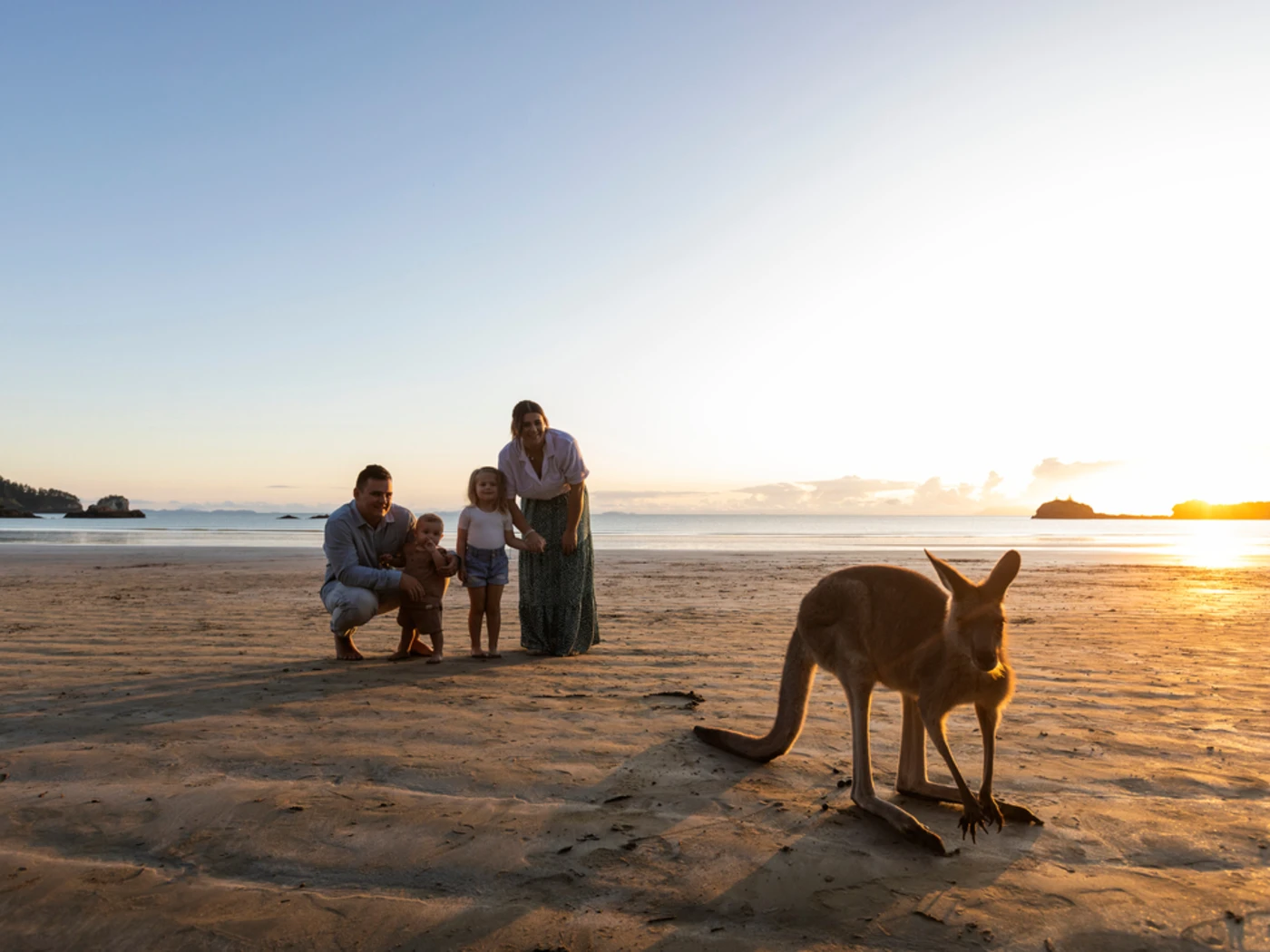
Kangaroos at Cape Hillsborough
Rules for sharing the beach with our kangaroos
For the best photos, use a long-lens camera from the beach’s upper side. Please avoid flashes, bright torches and selfies – these frighten the animals.
Let the ‘roos leave in peace. Once the sun has risen, they’ll hop towards the shade of the national park. Please keep out of their way.
Keep your hands to yourself. Please don’t try to pat or approach the kangaroos. They’ll only run away.
Don’t feed the animals. They come to the beach to eat mangrove pods, which is good for them. Human food can make them sick.
For a more personalised experience, speak to our reception staff to join a tour with Mackay Tourism.
Other Animals of Cape Hillsborough Nature Tourist Park
Kangaroos and wallabies aren't the only locals here - in the sand, you’ll find ghost crabs, sand baller crabs and sand dollars (sea urchins), while the rock pools are home to brittle stars and barnacles. And more than 150 bird species call the national park home. We love sharing our wildlife with visitors – it’s part of what makes staying at Cape Hillsborough so special. But, to keep them (and you) safe, it’s important to keep a few dos and don’ts in mind.
Please do:
Watch animals day and night, to see extraordinary changes in behaviour.
Bring a camera and take amazing photos.
Keep a safe distance from all animals.
Step aside if an animal approaches you, and let it pass.
Stick to designated walking trails.
Please don’t:
Feed the animals.
Touch, pat or approach the animals.
Make sudden movements or loud noise around the animals.
Walk through a group of animals.
Use torches or flashlights around the animals.
Take selfies close to the animals.
Use drones.
Bring your dogs or other domestic animals with you.

